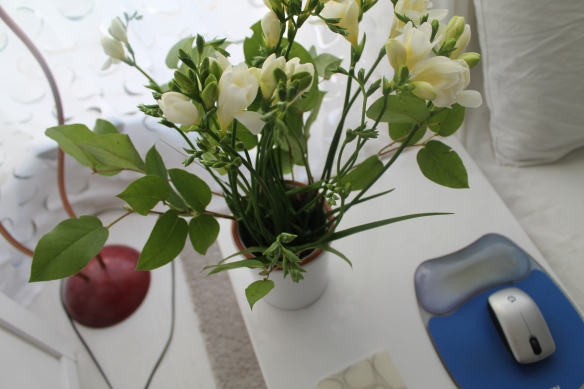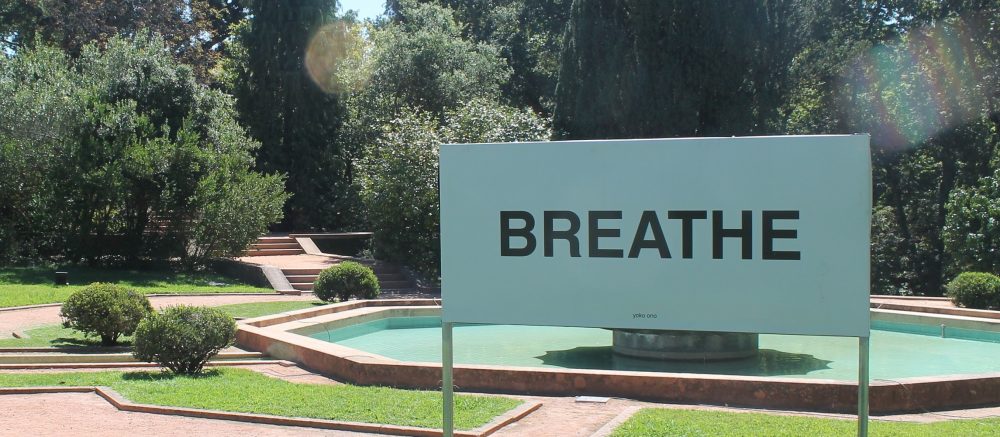I found some fresh-cut flowers today to liven up my place. Fragrant freesia. I always place them on the side table beside my chaise longue where I sit (sometimes all day since the lockdown) working and surfing the net on my laptop.

Went out at 5 pm to go food shopping at Monoprix. Despite the stress of having to stand patiently in line for 20 minutes before going inside, and wearing a face-covering while shopping, I must say that I’m very impressed with their organization. The shelves are well-stocked (still no flour. I’ve given up making my own bread) as are the produce, meat and fish sections. Everyone is well-behaved and mindful. They’ve installed plastic or plexiglass panels between the cashiers and the clients, and provided large bottles of disinfectant gel at the entrance to squirt on your hands (no, not to ingest) upon entering and exiting.
Because I have no masks left, I wear a scarf around the lower half of my face. But everyone else is wearing a proper mask. What I want to know is – where’s everyone getting their masks from? It’s a mystery to me. Tonight, my big plans for Saturday night are to make my own face mask from an old T-shirt!! I can hardly describe the excitement of my life since COVID began.

Came home and made myself a cocktail because, well, it’s cocktail hour. And yes, I’m going to eat that entire bowl of potato chips.

Saving the best for last:
The historical document below reminds us of something. Three centuries before the current COVID-19 epidemic, the French already had to fill in displacement certificates, as evidenced by this archive discovered by a historian.
The document is dated November 4, 1720, and is similar to the Attestation that we need to carry with us today. So that’s where the idea came from! The document was written during a plague epidemic in the south of France, known as the Marseille plague, in which over 100,000 people died. It was, in fact, bubonic plague and one of the last large epidemic outbreaks that France experienced, with the exception of the Spanish flu.
In 1918, a virus known as the Spanish flu killed over 50 million people the world over, making it the deadliest pandemic in modern history.

This ‘safe passage’ piece of paper authorizes Alexandre Coulomb, consul of 28 years “of ordinary size and with brown hair”, to leave Remoulins “where there is no suspicion of contagious disease” to go to Blauzac. The signatory, Judge-Consul Fabre, “begs those who are to pray” to allow the young man to circulate freely.
I looked on Google Map and saw that Remoulins and Blauzac are two towns due west of Avignon in what would have been the region of Occitania back then. The distance between the two towns is 21 kilometers (13 miles).
I wonder how he travelled (mule? carriage? on foot?) and what the consequence was if he was found to be traveling without a certificate.

Très intéressant, merci beaucoup.
Je vous en prie.